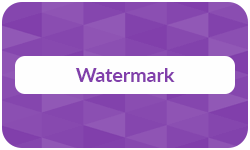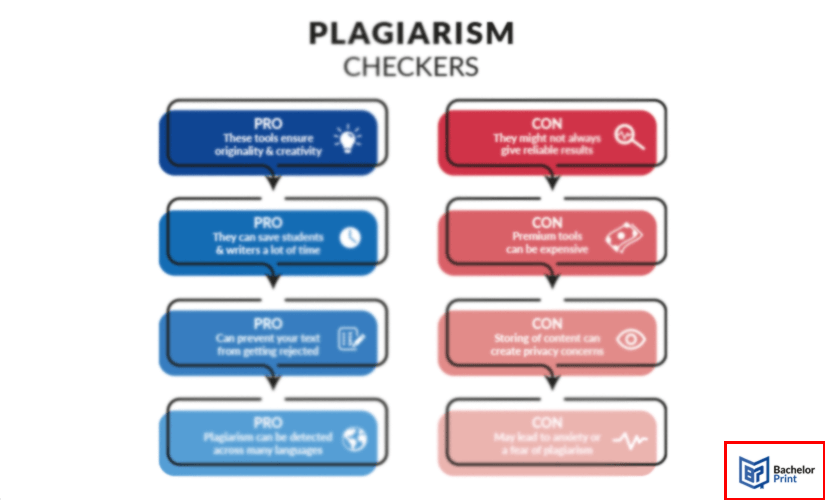
In printing terms, a watermark is a mark used to protect or brand a document. While traditional watermarks are physical, this guide focuses on digital watermarks. These help secure images, videos, and files from unauthorized use and distribution. We’ll dive into how digital watermarks work, the steps involved in creating them, and the various benefits and challenges they present in today’s digital age.
Definition: Watermark
A watermark is a mark or pattern embedded in a physical document or digital file to indicate authenticity, ownership, or origin. There are several types of watermarks, including:
Visible watermark
Clearly seen marks like logos or text on documents or images.
Invisible watermark
Hidden data embedded into a file, detectable with special tools.
Digital watermarks
Hidden marks in files to protect copyright and prevent misuse.
These document watermarks serve multiple purposes, including verifying authenticity, protecting copyrights, and enhancing brand visibility.
History
Watermarks originated in the 13th century as faint designs pressed into handmade paper, known as physical watermarks, used by papermakers to identify their products and prevent forgery. These marks helped authenticate documents and secure currency.
With the rise of digital media, the watermark process evolved into digital forms, embedding invisible watermarks and visible marks in images, videos, and documents to deter unauthorized use and piracy. Today, digital document watermarks are widely used in copyright protection, branding, and security as essential tools for managing digital rights and verifying authenticity.
PDF printing at BachelorPrint from $0.10
- Upload your files & order printed PDFs in minutes
- Secure online PDF printing service with reliable delivery
- High-quality prints from any PDF, including reports & more
Learn more!
Applications
Watermarks serve a wide range of purposes across both physical printing and digital media, helping protect, brand, and authenticate content in various industries.
In printing, shaded watermarks and stamp watermarks are used to secure significant documents, such as passports, banknotes, and official papers, making forgery more difficult. They also serve as a subtle branding tool on materials like certificates, letterheads, and packaging.
Digital watermarks protect copyrights by embedding hidden information, often using invisible watermarks that do not interfere with the viewing experience. They enable tracking and digital rights management, helping creators control and monitor the movement of content online.
How to create a watermark
Creating watermarks differs between physical and digital formats. Below is a simple guide for digital watermarking, which is commonly used to protect online content.
1️⃣ Select software
Popular tools for creating watermarks include Adobe Photoshop, Lightroom, or Acrobat, where you can easily adjust watermark settings to suit your needs.
2️⃣ Place the watermark
Carefully position the watermark, typically in the corners or centered, ensuring it’s noticeable yet doesn’t obscure important parts of the content.
3️⃣ Adjust opacity
Set the transparency level so that the watermark is clearly visible but remains subtle, sometimes referred to as a shaded or imperceptible watermark.
4️⃣ Apply & save
Once satisfied with the placement and opacity, export your file with the watermark embedded, making it ready for sharing, publishing, or distribution.
On our website, we watermark all original content using our logo, placed consistently with adjusted opacity to protect materials while maintaining a professional look.

Printing services at BachelorPrint
- Individual solutions & personal support
- High print quality & fast production times
- Wide range of print products for every need
Learn more!
How to remove a watermark
Removing watermarks depends on the type of document.
Physical documents
Techniques include bleaching, scanning without watermark, or professional restoration. However, these methods can damage paper and often violate legal restrictions related to physical watermarks.
Digital files
Software like Adobe Photoshop, GIMP, or specialized tools can help remove visible or shaded watermarks, but invisible watermarks are much harder to erase without corrupting the file.
Legal & ethical
Removing watermarks without permission is usually illegal and unethical, as it infringes on copyright and ownership rights.
Benefits & challenges
Watermarks provide important protection and branding benefits, but also come with practical and legal challenges that users should consider.
Benefits
- Strengthen brand identity using stamp watermarks consistently
- Enhance document authenticity & trust through document watermarks
- Deter unauthorized use with both visible watermarks & shaded watermarks
Challenges
- Risk of watermark removal with advanced editing techniques
- Finding the right balance between watermark visibility & subtlety
- Navigating legal & ethical issues around watermark use and removal
FAQs
A watermark is a visible or invisible mark, pattern, or design embedded in a physical or digital document to indicate its ownership, authenticity, or branding.
They protect content from unauthorized use, ensure authenticity, and promote brand recognition through consistent document watermarks.
No. Copyright legally protects original works, while a watermark is a tool, like a stamp watermark or shaded watermark, used to signal ownership and deter misuse.
You can add a watermark using word-processing or design software by adjusting watermark settings to overlay text or logos, often with adjusted transparency.
Examples include:
- Logos on photos,
- Faint text on official documents
- Digital watermark to photos/videos